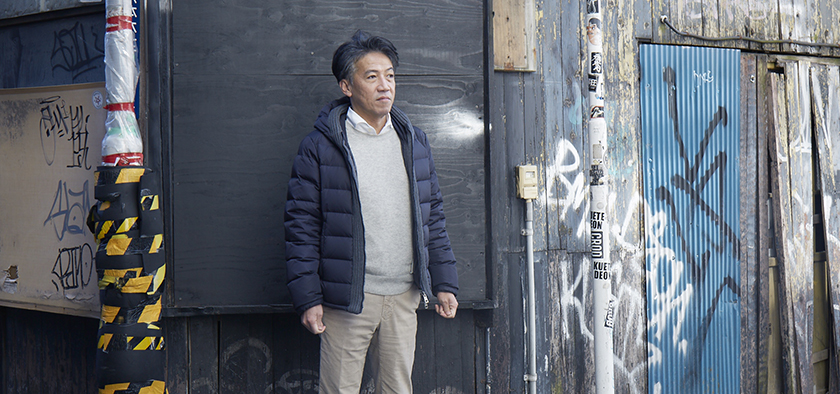


Aiming for a bright future filled with excellent design
Exhibions and workshops to raise design awareness
Product designer Hisakazu Shimizu is chief designer for Canon's IXY Digital series of compact digital cameras and the recipient of numerous awards both at home and abroad. The sculptures he made for Setouchi Triennale 2016 ? Regent in Olives and Bollard of Love - have been much talked about. Also active in design projects, Shimizu's activities are showcased at the "Local Design Studies 2017" exhibition which started on Feb. 3, 2017 at Tokyo Midtown Design Hub. We asked him about his thoughts on product design of the future.
Getting the attention of the uninterested majority
In Roppongi, events such as the Good Design Exhibition are held, and there are facilities like 21_21 DESIGN SIGHT, Tokyo Midtown Design Hub and AXIS; it's a place where many good designs can be appreciated. The people who are design-conscious come here - they are people who are keen on learning about design and they don't need to be urged to come.
But when you look at society as a whole, such people are a minority; most people are not interested in design. My job as a product designer is to design things for the uninterested majority. I've always worked with the hope of getting the attention of people who have no interest at all in design and art.
I've long been involved in the design of IXY Digital; about 5 million of the same product is made every year and sold worldwide. It's an astonishing figure: it means that around 20,000 cameras are made almost every day for about a year.
Product design is about giving shape to shared memories
How can we make things that our own grandparents will find visually appealing and will want to use? The answer is to incorporate a lot of elements that awaken memories. People are easily drawn to things that they know or remember - things which make them say, "I know that" or "Yes, that is the way it used to be." Many of our memories tend to be from childhood, and the sense of shared memories can be a really powerful factor.
When designing a camera for example, I incorporate numerous memory-awakening elements for all the tiny details; since a camera is something you hold in your hand, I think about how it would feel to the touch and which surfaces should be smooth or rough. I also use motifs from the past for the small details so that a tiny hole for example, will look familiar on close inspection, resembling something the user may have seen somewhere before. If you asked me how many details I think about, perhaps it would come to around a 100. That is the extent of thinking you have to do when making a product.
People all over the world have similar memories. Perhaps you might doubt that, but the form and function of things are not that different in many countries. For instance, it's rare to see a really weirdly shaped spoon, isn't it? Of course, there are differences according to age and country, but there are always memories that people have in common.
Turning the spotlight on the inconsequential things
There's a project called Lovable Bad Design which I've been doing since the early '90s. I started it because I realized that there are a lot of wonderful products that have not been given design prizes. I wanted to turn the spotlight on those inconsequential things.
Things that were made in the Edo period are carefully preserved and recorded, but that is not the case with mass-produced products of the Showa era. I wanted to properly record such things to prevent them from being forgotten and neglected. For instance, there is a mouthpiece on inflatable swim rings which is made from mold and can be pushed back once the ring has been inflated; the design is marvelously modern but it's only a small part, and it's difficult to give an award for that alone.
I named the project Lovable Bad Design to express respect and humor, but people tell me that the expression "Bad Design" isn't very good... The naming is the one thing I didn't get right in this project. (laughs)
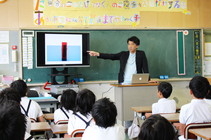
Lovable Bad Design
A project for finding good designs in everyday items. Shimizu started the project as a way of appreciating the pleasant and often humorous designs in our daily lives which do not win design awards. Lovable Bad Design workshops are held across Japan.

A project that began after the Regent in Olives was created
At the "Local Design Studies 2017" exhibition that will be held in Tokyo Midtown Design Hub, the history of the Lovable Bad Design project in Shodoshima will be shown. The project was launched after I made a work called Regent in Olives for Setouchi Triennale 2013.
I don't mean to boast, but this is a work that makes everyone smile - from children to the elderly. The work was initially meant to be shown only during the Setouchi Triennale; despite being located in a very remote place it was so popular that as many as 1,500 people came per day to see it. The residents in Shodoshima were delighted and the town decided to buy the work and put it on permanent display.
Later, we did activities related to the work such as painting pictures on its surface and making small models of the Regent (pompadour) hairstyle. And one day, when I was holding a workshop for children, I had the urge to do the Lovable Bad Design project in Shodoshima. The project was undertaken mainly by the young people on the island such as the members of the Junior Chamber. The people were from two towns in Shodoshima called Shodo and Tonosho; it was the first time for the two towns to jointly cooperate on a project.
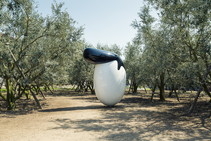
Regent in Olives
A sculpture of an olive-shaped head with a Regent (pompadour) hairstyle. The work can be used as an unmanned stall, with vegetables and fruit placed on a hollow part. It is currently on permanent display in the olive groves of Shodoshima.
No rules for choosing an item of Lovable Bad Design
I held workshops on the island for about two and a half years; in the beginning, people were telling me that they had absolutely no idea how to find good designs. There are no rules for the Lovable Bad Design though. Anything that a person chooses is a Lovable Bad Design. It all depends on which memories are important for a person.
At a workshop I held at an elementary school, I showed the children some of the Lovable Bad Design items I had chosen. The children immediately wanted to go out and hunt for things themselves; they didn't want to listen to any further explanation. Children are so straightforward. But adults want to get the correct answer, so they ask questions like "What exactly does 'Lovable' mean?" and they sit there, motionless. (laughs) Interestingly however, when they watch the others and they realize that it's okay to choose what they personally like, they are able to find all kinds of things.
What I make are works of design, not art
When you think about it, Regent in Olives is also an example of a Lovable Bad Design. The Regent hairstyle is a trivial thing, but it means a lot to some people. There are few people who wear the hairstyle nowadays and it's gradually becoming almost as rare as the chonmage (topknot) hairstyle; I made the work because I felt it was about time that it was preserved in some way. I like the way it looks carefree and pop.
I feel the same way about Bollard of Love that I made in 2016. A bollard is a post for mooring boats; it's that thing that a hero in a movie puts his foot on while gazing at the sea. (laughs) I created a big bollard-shaped work to symbolize that all kinds of things will come and stay in the island.
Since I'm a designer, I think of both Regent of Olives and Bollard of Love as being works of design, not art. When a work is described as art, it suddenly becomes incomprehensible, and people stop trying to understand it.
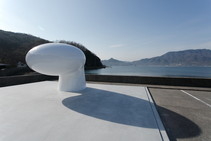
Bollard of Love
A large bollard-shaped sculpture placed in a parking space near the shore in Shodoshima. It stimulates the imagination, making the viewer wonder what will come in from the sea. The work was created for Setouchi Triennale 2016.
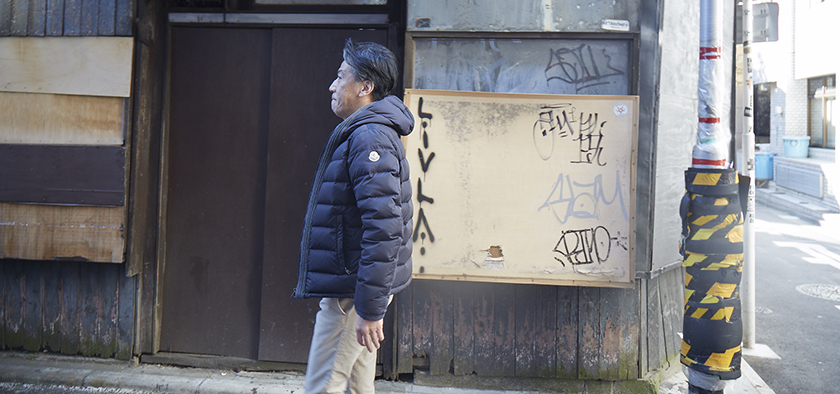
The world of design in Japan has yet to grow
I feel that in Japan, people have a preconceived notion of how things should be designed, and there's not much depth. In the world of music for example, there are many different genres such as classic, jazz and rock which have each matured into cultures, but the world of design in Japan hasn't reached that level yet.
The Lovable Bad Design project is meant to let people know that there are different ways of looking at things; it's an activity to raise awareness of the often overlooked good designs. My hope is to expand the boundaries of design and encourage diversity. We need a large variety of designs to get the interest of more people and to make our culture grow.
Paris - a wonderful city where ordinary people buy art
From a cultural perspective, I think Paris is a wonderful city. The art galleries in the streets are impressive - they deal with such a wide range of genres. They have all sorts of works and everything is appreciated; it's a reflection of the very sophisticated sensibilities that the French have toward design and art.
In 2008, when I held the "Japanese history" exhibition, a dealer from a downtown gallery in Paris bought my Hairstyle Mirror series. I was a bit doubtful that anyone would actually buy them, but the Heizo Hasegawa mirror was purchased by an accounting firm in Paris, and I happened to see the Ii Naosuke mirror in the restaurant opposite the hotel I was staying at. The fact that ordinary people will buy a mirror that costs 10,000 euros strengthened my awe for France.
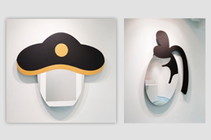
Hairstyle Mirrors
Mirrors shaped in the distinct hairstyles of historical people. The works were displayed at the "Japanese history" exhibition in 2008 and the "Hairstyle Mirrors - Hisakazu Shimizu" exhibition in 2010. On the left is the Heizo Hasegawa mirror and on the right is the Ii Naosuke mirror.
Designs will improve as consumers become more discerning
I think that in the future, designs will become increasingly varied. We will probably see more different types - simple, decorative, futuristic, retro and so on. There will be more people who appreciate these various styles, and the world of design will come to have more depth. Perhaps it will take time for that to happen, but that's the future I hope for and believe in.
When you watch the shopping channels, you see that they are selling all kinds of products like vacuum cleaners and rice cookers which are of terrible design. (laughs) But in the future, I'm sure that all those products will become better too. People will become more discerning, and when there are more design-conscious consumers, the designs will naturally improve.
However, I am not saying that everything should become smart and polished. A house filled with sleek household appliance wouldn't feel cozy, would it? It would not be right at all to raise children in a house that is too stylish or devoid of warmth. Children develop their sensibilities in a cluttered environment.
Preserving the memories such as of touch or smell
I think it's important to study things of the past. There's significance in preserving memories of details such as touch or smell. I was recently watching a "jidaigeki" (period drama) on television and suddenly wondered how they wore those swords. There was such a long period where samurai wore two swords and only around 150 years have passed since the Edo period, yet now almost nobody knows how the swords were worn.
At the workshops in Shodoshima, we once experimented in making Regent hairstyle wigs and wearing them. We found out that the hairstyle is heavy and easily droops, so you need to maintain a good posture, and that makes you feel cheerful and positive. Maybe it's a ridiculous discovery, but it's something we learnt because we tried it.
Instead of just looking at the smartphone screen, we should also try things out by wearing them or using them. It's truly wonderful to have the experience of actually touching things. I think that is what leads to creativity of the future. Perhaps it would be fun to hold workshops for dressing up like samurai and tying up the hair in knots. (laughs)
How people in the future will remember Roppongi
I once held a workshop for elementary school children when my works were shown at Souvenir from Tokyo, the museum shop at the National Art Center, Tokyo. We walked in the streets of Roppongi and searched for items of Lovable Bad Design; the children took photographs and made presentations and then we later made a book.
That workshop was held just around the time the National Art Center opened, so it's only about 10 years ago, but I looked at the backstreets today and found that they have changed drastically. When I was a student, I came to Roppongi to dance at the Tamatsubaki disco, and as an adult, I often came here for work, but the streets that I knew have all disappeared. I don't think there are many areas like Roppongi where everything has been redeveloped in a span of 10 to 20 years.
Nothing remains of the streets I remember so I'm sure that the local residents feel sad about it too. This spot here where we just did the photo shoot, seems to be about the only place that survived demolition - it represents the memories of Roppongi. These cold, glass-walled buildings that we see in Roppongi now - I wonder if they are going to remain in people's memories. I ask myself whether people will recall them with nostalgia.
Design is about the accumulation of the small details
As I mentioned earlier, design aficionados will always be interested in design, so I would like to do events targeted for the rest of the population. For example, we could have events where people who are not designers gather to exhibit items that hold memories for them. For instance, a person who used to like stuffed animals could bring one along.
People who are not interested in design don't know how to look at products, even if you put something right in front of them. Many of the items that are chosen for Lovable Bad Design are small things like handles and metal parts. That's because design is essentially about the accumulation of small details. As 21_21 DESIGN SIGHT is a design facility, it would be the perfect venue for exhibitions and workshops to raise awareness about designs.
For our future to be bright and filled with excellent designs, we need to do all kinds of activities so that ordinary people, from middle-aged men and women to young guys who have nothing to do with design, will be able to look at things and appreciate them and know the joy of design. But all this is not going to happen overnight - it will certainly take time.
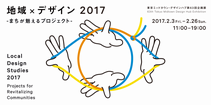
Local Design Studies 2017
- Projects for Revitalizing Communities
An exhibition on the design-related projects being undertaken in Japan for revitalizing communities through regional assets. From the perspective of design, the exhibition looks at projects such as the Lovable Bad Design project in Shodoshima and The Town of Photography project in Hokkaido's Higashikawa, as well as the activities of Nara-based Nakagawa Masashichi Shoten to revive regional manufacturing industries. Runs through Feb.26 (Sun) at Tokyo Midtown Design Hub.
Editor's thoughts
The editorial team rambled through the streets of Roppongi with Shimizu-san, searching for things of Lovable Bad Design. We then came upon a spot which Shimizu-san said looked like a picture, and it was there that we took the photos for this interview. Incidentally, the"Local Design Studies 2017" exhibition at Design Hub is on until Feb. 26 (Sun). I hope readers will make a visit.
(edit_kentaro inoue)



















